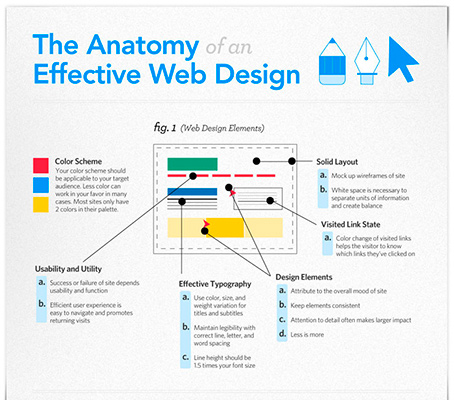Have you ever before saw a site that took forever to load, had a confusing navigating system, or didn't display appropriately on your mobile phone? Chances are, you rapidly abandoned that site and carried on to one that provided a much better individual experience.
In today's affordable online landscape, it's important for companies to focus on web design that improves customer experience in order to drive better conversions. In this discussion, we will certainly explore the relevance of responsive design, the use of instinctive navigating, and the optimization of page load rate to develop a seamless and appealing user trip.
Remain tuned to discover exactly how these aspects can substantially influence your site's success.
Significance of Responsive Layout
Responsive design is important in today's electronic landscape for producing internet sites that adapt perfectly to various screen sizes and devices. When your website is receptive, it immediately adjusts its layout and material to fit any tool, whether it's a smartphone, tablet computer, or home computer. This is essential due to the fact that an increasing number of individuals are accessing the web through their smart phones.
If your internet site isn't receptive, it can bring about an inadequate individual experience. Users may need to pinch and zoom to review material, switches might be also little to click, and photos may not be optimized for smaller sized displays. This can irritate individuals and lead to high bounce prices and low conversions.
Using User-friendly Navigating
When making a receptive website, it is essential to focus on using user-friendly navigation for an enhanced individual experience.
Instinctive navigation refers to organizing your web site's menu and navigating aspects in a sensible and straightforward way. By doing so, you make it much easier for visitors to discover what they're seeking and navigate via your internet site easily.
Intuitive navigation helps in reducing complication and frustration, eventually leading to far better customer involvement and increased conversions.
To achieve instinctive navigation, consider making use of clear and descriptive labels for your menu things, executing a consistent format across all pages, and incorporating search functionality for quick accessibility to certain material. In addition, it's critical to prioritize important web pages and information, guaranteeing they're plainly shown and easily obtainable.
Optimizing Web Page Tons Speed
To boost user experience, it's crucial to optimize the web page load speed of your website. Slow-moving loading times can frustrate users and result in greater bounce prices.
Luckily, there are a number of methods you can execute to improve your site's load rate. To start with, think about minimizing the size of your images by compressing them without jeopardizing top quality.
Additionally, enhance website companies near me by lowering unnecessary scripts and CSS files. Another efficient strategy is to leverage browser caching, which permits certain aspects of your website to be stored in your area, reducing tons times for returning visitors.
Moreover, consider utilizing a material distribution network (CDN) to disperse your website's data throughout numerous servers, boosting load rate for users in different geographical locations.
https://internetmarketingstatisti98642.myparisblog.com/30763454/understanding-the-power-of-influencer-advertising-in-the-digital-age
To conclude, by utilizing responsive layout, intuitive navigating, and optimizing web page load rate, website design can dramatically boost user experience and drive far better conversions.
With an easy to use interface, simple navigating, and fast loading times, sites can catch and preserve the interest of users, bring about boosted interaction and greater conversion prices.
So, don't delay in implementing these website design techniques to guarantee a smooth and successful customer experience!
